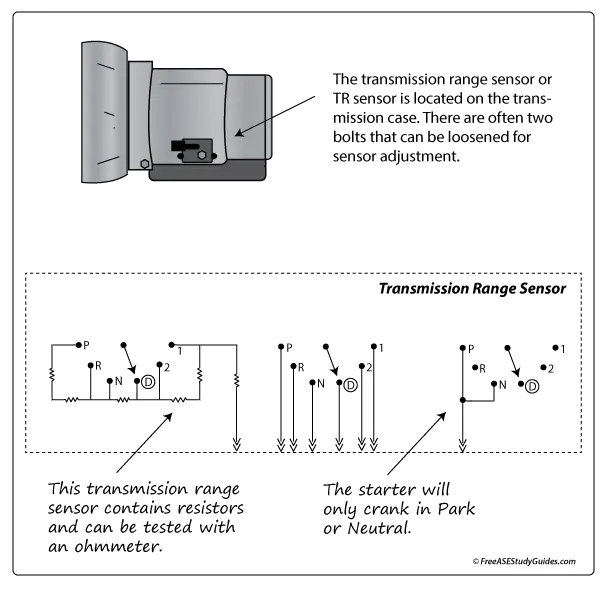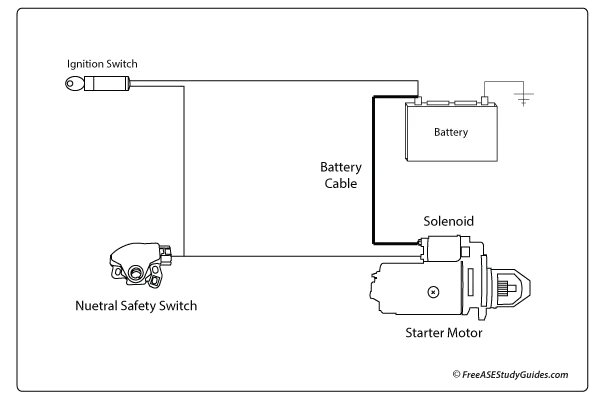Transmission Range Sensor

Analog transmission range sensors use resistance to indicate gear selection to the TCM. Because it uses resistance, an ohmmeter can be used for diagnosis. Use it to measure the resistance in the different gear ranges and compare them with manufacturer specifications. This question also reminds us that a powered circuit can damage an ohmmeter. Never use an ohmmeter on a powered circuit. Use a voltmeter to measure the voltage drop in a powered circuit.

Both the neutral safety switch and the transmission range sensor are protection devices used to prevent starter operation in all gears other than Park and Neutral. The TR sensor is a member of the starter control circuit and informs the TCM of the current gear selection.
To diagnose, use the DC voltage setting on a digital multimeter. Voltage should be present at this switch when the ignition switch is turned to the start position. With any gear position other than park or neutral (R, D, D1, D2), the starter circuit is open, and voltage is prevented from engaging the starter motor.

If there's a no-start condition, this switch can be tested using a voltage meter. Just back-probe the desired wire while someone turns the ignition. Check whether the battery voltage is present at the wires leading to the rest of the starter circuit in the Park and Neutral positions. If voltage is coming into this switch and no voltage is going out in these two selections, replace the neutral safety switch.
Resistance is measured using a high impedance 10 Megohm multimeter between the appropriate connections and then comparing these results with manufacturer specifications. The older neutral safety switch and the newer transmission range sensor will cause a no-start condition and no backup lamp operation. The neutral safety switch usually has the backup lamp circuit built in. A misadjusted TR sensor can cause harsh shifting or confuse the PCM if its resistance is out of specification. Adjustments may be necessary.